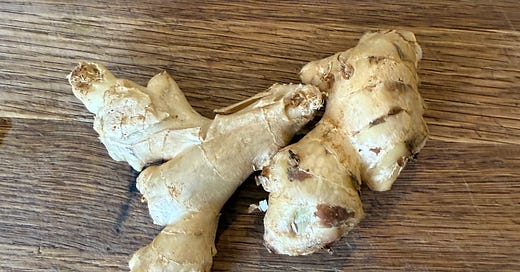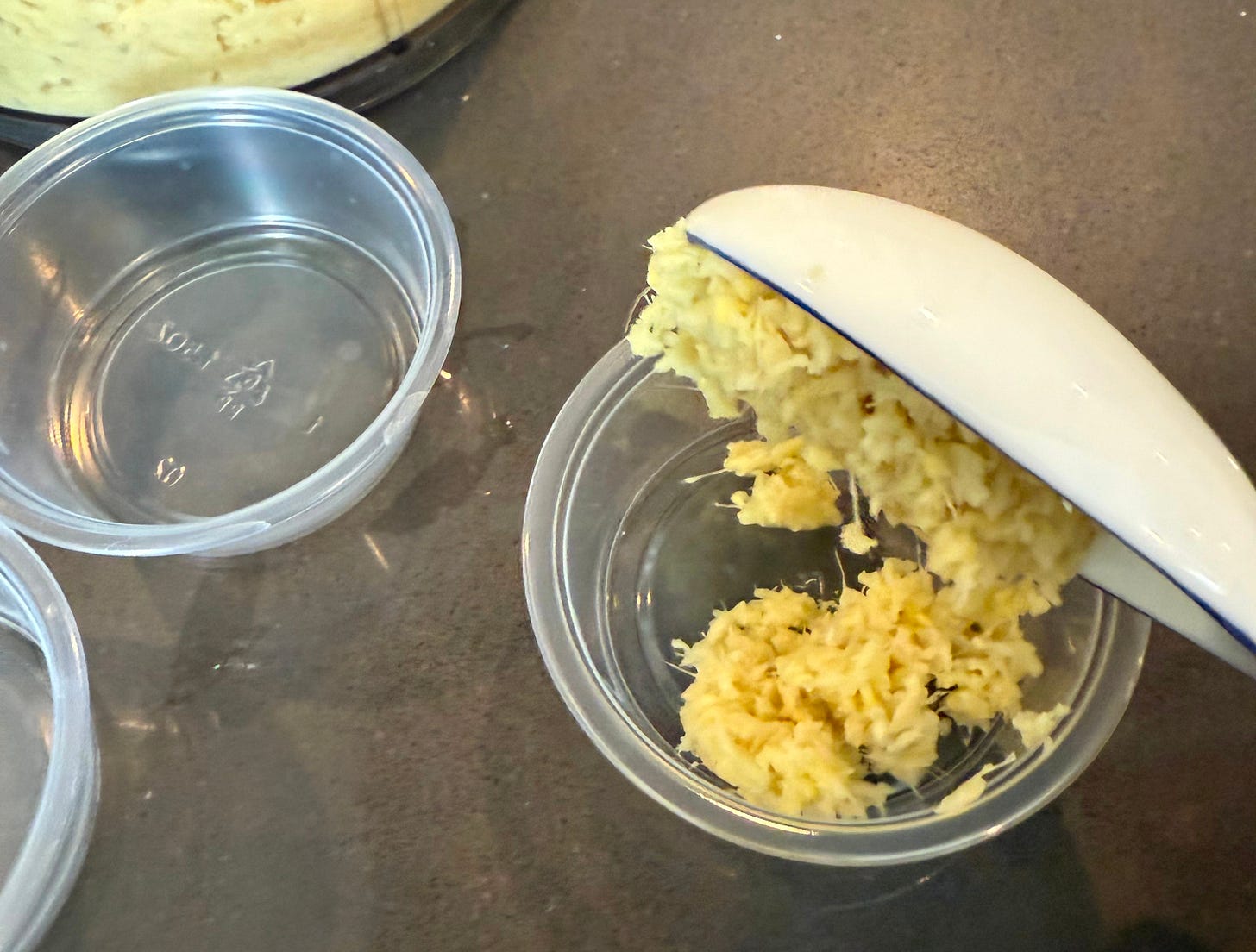The first time I ever cooked with fresh ginger was during a summer between college semesters, after I saw a recipe in a cooking magazine (a print magazine that I borrowed from the library, gah this was a long time ago) for homemade ginger ale. This was a revelation for several reasons, the biggest one being that it took that long into my life for me to realize that ginger ale had actual ginger in it, and the second being that ginger was a plant root and didn’t exist solely as the golden-hued powder in the McCormick jar on my mom’s spice rack. The recipe involved making a syrup by simmering ginger slices with water and sugar, and I was proud of myself for conquering a new ingredient. Cooking with fresh ginger was a cinch, I thought, until a few years later when I came across another recipe that called for it to be minced. ? How does one accomplish that, I thought, as I eyed my ancient garlic press, which clearly wouldn’t do the trick. A work colleague had recently turned me on to Kalustyan’s in New York City (which should be the topic of its own post—I 💙 Kalustyan’s 4eva), and I asked her how one went about mincing ginger. She suggested I go to Kalustyan’s and buy a ceramic ginger grater. Which I did, and it looked like this:
God, did I hate using it; more accurately, did my knuckles hate me using it. Fast forward a few years to when microplanes became more mainstream, and the task became easier. But it still took a while to grate a big root, because it had to be done one piece at a time and then the blade would get clogged with fibers that had to be cleared off frequently. But sometime in the early aughts, I got my first Cuisinart immersion blender which came with a mini food processor—at this very point, life on the ginger front changed for me dramatically. So, me and my unblemished knuckles are here to tell you how to use a food processor to easily mince ginger and freeze it so you always have it on hand.
Using a paring knife or a vegetable peeler, remove the outer skin from a thick piece of ginger root, one that’s about 4-5” inches long or so; roughly chop the peeled ginger into slices and place in a mini food processor or a blender. If you only have a regular-sized food processor, you’ll need a larger amount of ginger—at least 3 or 4 large root pieces—in order for it to pulverize well. Add a few drops of water and pulse several times until the ginger breaks down to minced status. Voilà!
You can store in the fridge for a day or so until you need it, but you can also freeze the ginger in pre-measured portions, so you can grab and go as you need for different dishes. To accomplish this, you’ll need to start saving up the 2- or 4-ounce plastic condiment cups you get with takeout food orders or pizza deliveries. (These cups are also available in grocery stores, and of course online.) Measure out the grated ginger into the cups—1 or 2 tablespoons will fit in a small 2-ounce cup—then cover and freeze. I write the measurement increment on the tops of the cups so I don’t forget what I did. You can also get crazy and separate out one tablespoon into three chunks, so you can grab a teaspoon hunk at a time for recipes that call for a small amount, and put the rest back into the freezer.
While I can’t be sure what magazine the original ginger ale recipe came from, this one is pretty close, and seeing Gourmet was available at the West Caldwell Public Library way back when, it might be the original! Enjoy.






